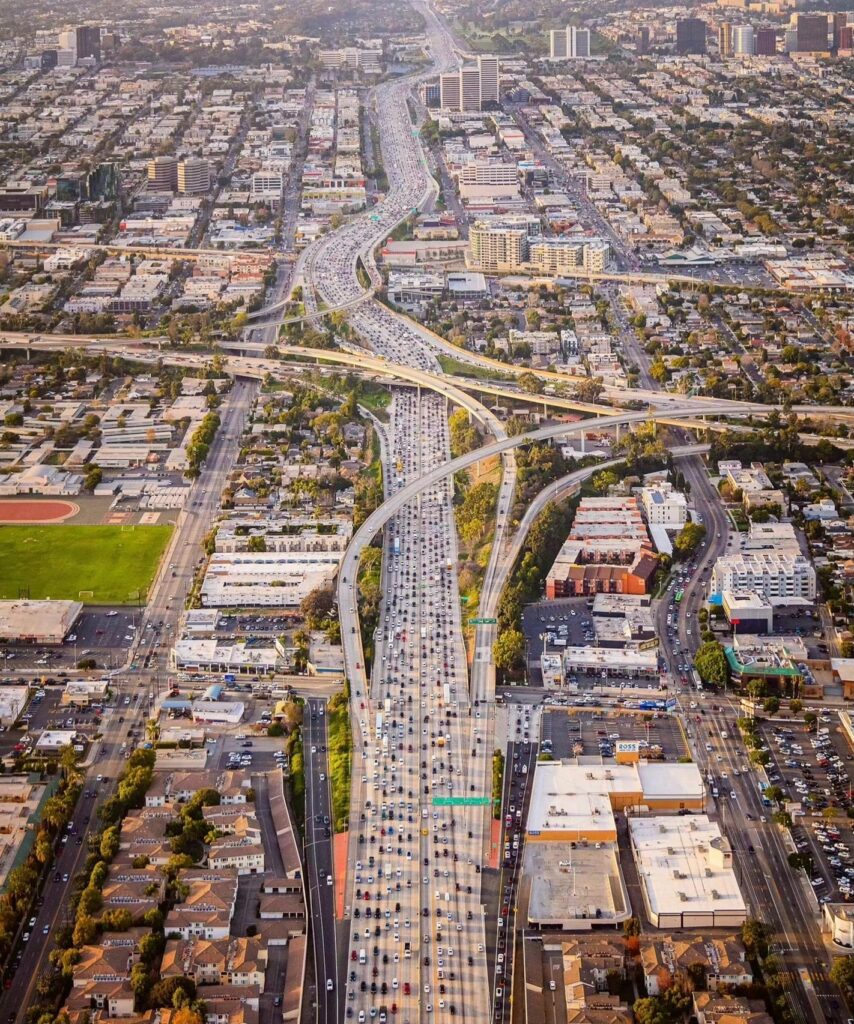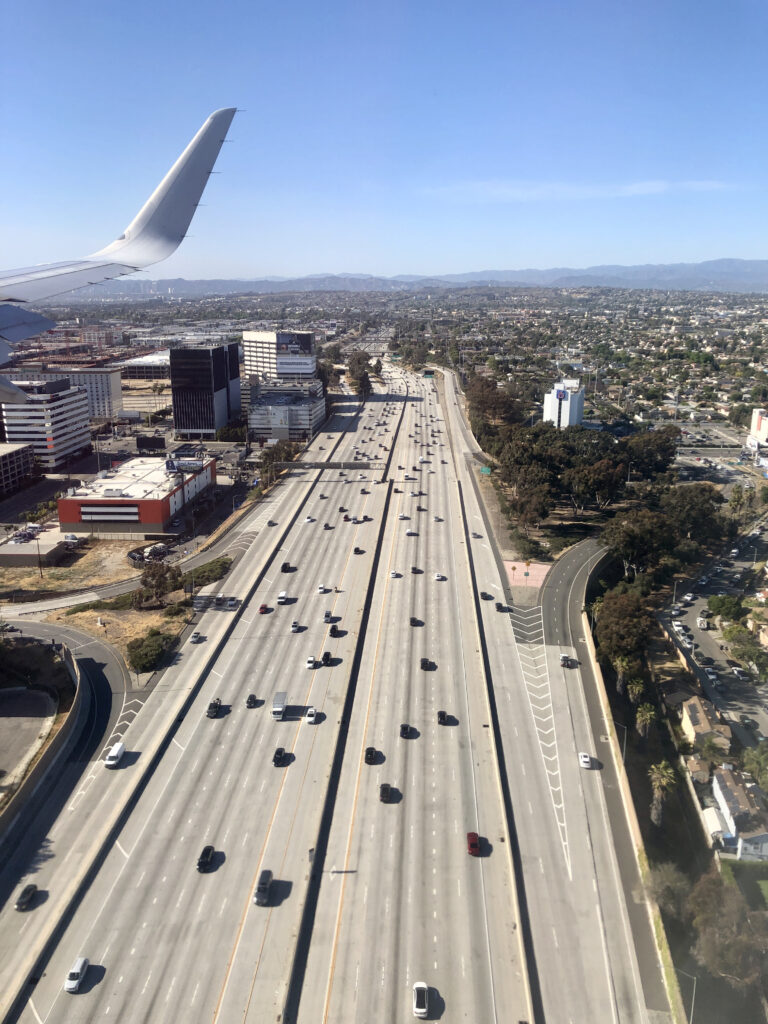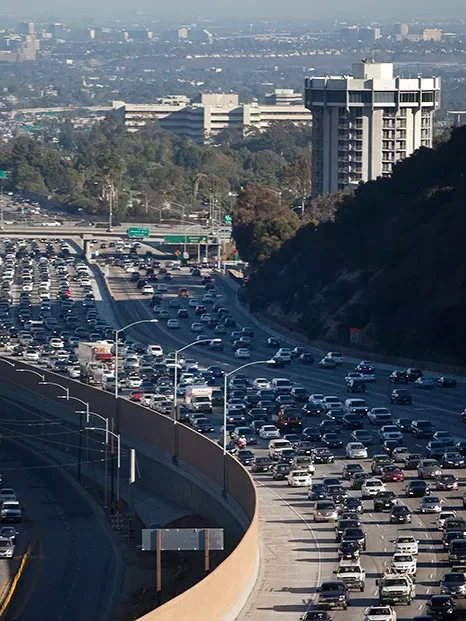The 405 freeway over Sepulveda Pass, California. In August 1960, work began on the 405 Freeway connecting western Los Angeles to the San Fernando Valley; it was part of a 12-mile, $20 million project, then the most expensive California highway.

According to the Los Angeles Times, the 405 Freeway in the Sepulveda Pass was a bypass for Sepulveda Boulevard (former Route 7), opened in 1935, and was hailed in the Los Angeles Times as a “new and wondrous highway” over the mountains, vastly superior to the overcrowded Cahuenga Pass and Laurel Canyon. The Sepulveda Canyon, through which the Freeway passes, was once a bucolic country road through the Santa Monica Mountains until it was transformed into L.A.’s most hated stretch of Freeway.

Interstate 405 is also known as the San Diego Freeway, and it is the busiest highway corridor in the United States, serving 379,000 vehicles per day. The 405 Freeway has had a significant impact on California, connecting western Los Angeles to the San Fernando Valley, and making it easier for people to commute between the two areas.

Everyday life alongside the 405 Freeway is very challenging. People who live in these communities benefit from easy transportation access and proximity to amenities but may also experience noise and air pollution. Despite the challenges, these communities are vibrant and diverse, with their unique character and charm.


